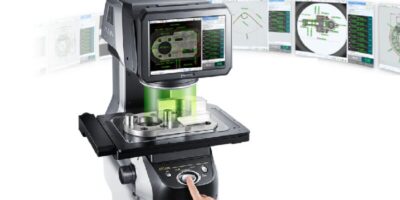Introduction
Non-clinical information systems refer to healthcare IT solutions designed to manage administrative, operational, and financial aspects of healthcare organizations. These systems do not deal directly with patient care but support various functions such as billing, scheduling, human resources, supply chain management, and overall hospital administration. Non-clinical information systems are essential for streamlining operations, enhancing efficiency, and ensuring compliance with regulatory requirements in healthcare settings.
2. Market Overview
The non-clinical information system market encompasses a range of software solutions and technologies used by healthcare organizations to manage non-patient care activities. This market includes systems such as hospital management systems (HMS), electronic health record (EHR) management tools, revenue cycle management (RCM) systems, and human resource management systems (HRMS). The market is driven by increasing demand for operational efficiency, regulatory compliance, and the need to integrate and streamline administrative functions in healthcare organizations.
3. Market Trends
- Integration with Clinical Systems: There is a growing trend towards integrating non-clinical systems with clinical information systems to provide a seamless flow of information across healthcare organizations.
- Cloud-Based Solutions: The adoption of cloud-based non-clinical information systems is rising due to their scalability, flexibility, and cost-effectiveness.
- Focus on Data Security: With increasing concerns about data breaches and privacy, there is a heightened focus on enhancing the security features of non-clinical information systems to protect sensitive healthcare data.
4. Market Dynamics
- Technological Advancements: Continuous advancements in IT technologies, such as AI, machine learning, and data analytics, are enhancing the capabilities of non-clinical information systems and driving market growth.
- Regulatory Compliance: Stringent regulations and standards related to data privacy, billing, and healthcare operations are influencing the adoption and development of non-clinical information systems.
- Operational Efficiency: The need to improve operational efficiency and reduce administrative costs is driving the demand for advanced non-clinical information systems in healthcare organizations.
5. Key Drivers
- Demand for Operational Efficiency: Healthcare organizations are seeking solutions to streamline administrative processes, reduce costs, and improve overall operational efficiency.
- Regulatory Requirements: Compliance with healthcare regulations and standards necessitates the use of advanced non-clinical information systems for accurate reporting, billing, and data management.
- Data Integration and Management: The need for effective integration and management of data across different departments and systems is driving the adoption of comprehensive non-clinical information solutions.
6. Key Insights
- Broad Application Range: Non-clinical information systems cover a wide range of applications, including finance, human resources, supply chain management, and facility management, making them integral to healthcare administration.
- Increased Adoption in Small and Medium Healthcare Facilities: Small and medium-sized healthcare facilities are increasingly adopting non-clinical information systems to enhance their operational capabilities and improve efficiency.
- Emphasis on User Experience: Improving the user experience and ease of use of non-clinical information systems is a key focus for vendors, aiming to enhance user satisfaction and adoption.
7. Benefits
- Enhanced Efficiency: Non-clinical information systems automate administrative tasks and streamline operations, leading to increased efficiency and reduced manual effort.
- Cost Reduction: By optimizing administrative processes and resource management, these systems help healthcare organizations reduce operational costs.
- Improved Compliance: Non-clinical information systems support compliance with regulatory requirements, including billing accuracy, data privacy, and reporting standards.
8. Challenges
- Integration Issues: Integrating non-clinical information systems with existing clinical and administrative systems can be complex and may require significant effort and resources.
- Data Security Concerns: Ensuring the security and privacy of sensitive healthcare data in non-clinical information systems is a major challenge, requiring robust security measures.
- Cost of Implementation: The initial investment and ongoing maintenance costs of non-clinical information systems can be significant, posing a challenge for some healthcare organizations.
9. Opportunities
- Emerging Technologies: Opportunities exist for leveraging emerging technologies, such as artificial intelligence and blockchain, to enhance the functionality and capabilities of non-clinical information systems.
- Expansion into New Markets: The growing healthcare sector in emerging markets presents opportunities for the adoption and implementation of non-clinical information systems.
- Customization and Integration: Providing customizable and integrative solutions tailored to the specific needs of different healthcare organizations can drive market growth.
10. Future Outlook
The non-clinical information system market is expected to continue growing as healthcare organizations increasingly seek to improve administrative efficiency, ensure regulatory compliance, and integrate various operational functions. Future developments will likely focus on enhancing system capabilities through advanced technologies, improving integration with clinical systems, and addressing data security challenges. As the healthcare sector evolves, non-clinical information systems will play a crucial role in supporting the operational and administrative needs of healthcare organizations.
𝐂𝐥𝐢𝐜𝐤 𝐇𝐞𝐫𝐞, 𝐓𝐨 𝐆𝐞𝐭 𝐅𝐫𝐞𝐞 𝐒𝐚𝐦𝐩𝐥𝐞 𝐑𝐞𝐩𝐨𝐫𝐭
https://stringentdatalytics.com/sample-request/non-clinical-information-system-market/13884/
Market Segmentations:
By Company
Quest Diagnostics
CareCloud Corporation
McKesson Corporation
Kareo
Cerner Corporation
Athenahealth
eClinicalWorks
General Electric Company
SSI Group
Allscripts
By Type
Service
Software
Hardware
By Application
Hospitals
Clinics
Others
Global Non Clinical Information System Market: Regional Analysis
The regional analysis of the global Non Clinical Information System market provides insights into the market’s performance across different regions of the world. The analysis is based on recent and future trends and includes market forecast for the prediction period. The countries covered in the regional analysis of the Non Clinical Information System market report are as follows:
North America: The North America region includes the U.S., Canada, and Mexico. The U.S. is the largest market for Non Clinical Information System in this region, followed by Canada and Mexico. The market growth in this region is primarily driven by the presence of key market players and the increasing demand for the product.
Europe: The Europe region includes Germany, France, U.K., Russia, Italy, Spain, Turkey, Netherlands, Switzerland, Belgium, and Rest of Europe. Germany is the largest market for Non Clinical Information System in this region, followed by the U.K. and France. The market growth in this region is driven by the increasing demand for the product in the automotive and aerospace sectors.
Asia-Pacific: The Asia-Pacific region includes Singapore, Malaysia, Australia, Thailand, Indonesia, Philippines, China, Japan, India, South Korea, and Rest of Asia-Pacific. China is the largest market for Non Clinical Information System in this region, followed by Japan and India. The market growth in this region is driven by the increasing adoption of the product in various end-use industries, such as automotive, aerospace, and construction.
Middle East and Africa: The Middle East and Africa region includes Saudi Arabia, U.A.E, South Africa, Egypt, Israel, and Rest of Middle East and Africa. The market growth in this region is driven by the increasing demand for the product in the aerospace and defense sectors.
South America: The South America region includes Argentina, Brazil, and Rest of South America. Brazil is the largest market for Non Clinical Information System in this region, followed by Argentina. The market growth in this region is primarily driven by the increasing demand for the product in the automotive sector.
Click Here, To Buy Premium Report
Key Questions Answered in This Report:
1. What are non-clinical information systems, and what functions do they serve?
2. What are the primary benefits of implementing non-clinical information systems in various industries?
3. What factors are driving the growth of the non-clinical information system market?
4. What are the major challenges associated with deploying non-clinical information systems?
5. Who are the leading vendors and providers in the non-clinical information system market?
6. What are the current trends and technological advancements in non-clinical information systems?
7. How are non-clinical information systems utilized across different sectors such as healthcare, finance, and education?
8. What role do data security and compliance play in the non-clinical information system market?
9. What opportunities for growth and innovation exist within the non-clinical information system market?
10. What is the future outlook for the non-clinical information system market?
About Stringent Datalytics
Stringent Datalytics offers both custom and syndicated market research reports. Custom market research reports are tailored to a specific client’s needs and requirements. These reports provide unique insights into a particular industry or market segment and can help businesses make informed decisions about their strategies and operations.
Syndicated market research reports, on the other hand, are pre-existing reports that are available for purchase by multiple clients. These reports are often produced on a regular basis, such as annually or quarterly, and cover a broad range of industries and market segments. Syndicated reports provide clients with insights into industry trends, market sizes, and competitive landscapes. By offering both custom and syndicated reports, Stringent Datalytics can provide clients with a range of market research solutions that can be customized to their specific needs.
Contact Us
Stringent Datalytics
Contact No- +1 346 666 6655
Email Id- sales@stringentdatalytics.com
Web- https://stringentdatalytics.com/




Leave a Reply